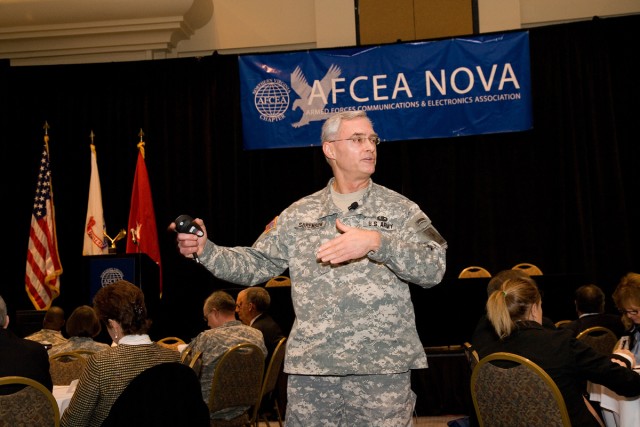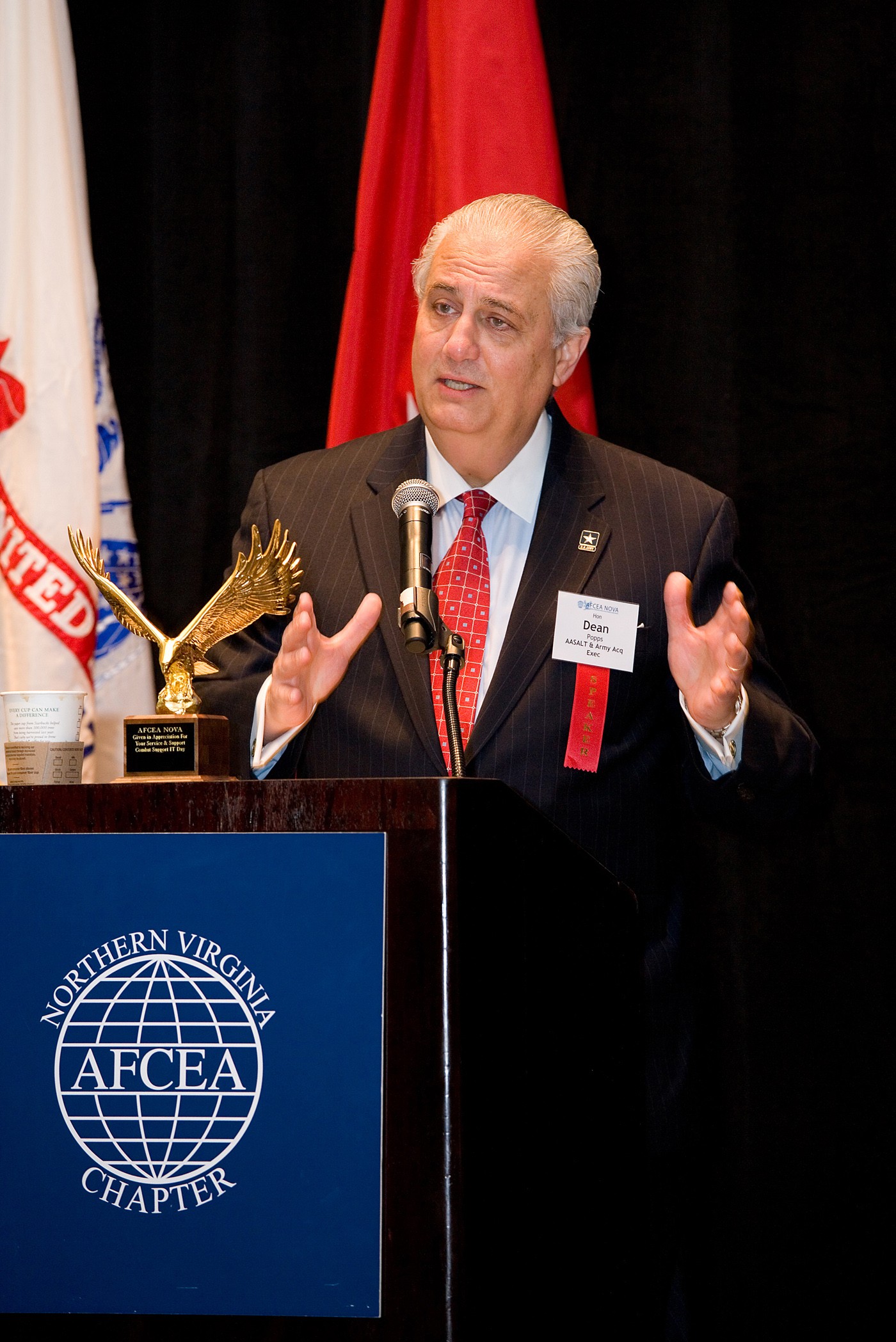ARLINGTON, Va. (Jan. 19, 2010) -- Through an enterprise network architecture, the Army seeks to increase standardization in vehicles and tactical operations centers, or TOCs, diminishing the amount of cables, screens and terminals required in each.
"At the end of the day, it's all about making sure that the warfighter has the situational awareness he needs to conduct his operations and to be safe and secure in the area of operations," said Lt. Gen. Jeffrey A. Sorenson, the Army's chief information officer/G-6.
Sorenson spoke about planning, policy and architecture for this Global Network Enterprise Construct, or GNEC, during the 9th Annual Armed Forces Communications and Electronics Association NOVA Army IT Day held on Jan. 14 in Tysons Corner, Va.
In the battle-command environment, many of today's vehicles consist of "bolt on" applications with complex cablings. In TOCs and vehicles they consist of extraneous terminals and screens leaving equipment short on meeting power requirements, he said.
GNEC will bring a standardized architecture kit and operating environment at the TOC, vehicle and Soldier level, he said. The approach to developing and implementing applications will be based on industry best practices, he said.
In today's Army, Soldiers are building their own applications to manage their missions in Iraq and Afghanistan; but stand alone operating environments prevent others from being able to access them.
GNEC will also provide users with universal e-mail, storage and access to data. So, Soldiers will be capable of connecting to a seamless, simple network from anywhere across the globe.
By reorganizing Directorates of Information Management (DOIMs) into Network Service Centers, Soldiers will able to access training data prior to deployment, so they can train as they fight, he said.
Warfighters want to access their data from any location without needing to transport servers to each area for access, Sorenson said. They want across the service access to "persona" rights and privileges. GNEC will build a single infrastructure for each of the services to share, he said.
"This new framework is not so much an Army CIO/G-6 initiative as an Army chief of staff (initiative)," Sorenson said. The GNEC staff meets with the chief of staff on a quarterly basis.
GNEC will "reshape the Army completely," said Dean G. Popps, the principal deputy assistant secretary of the Army for Acquisition, Logistics and Technology during the conference's opening remarks.
Known mainly for its role in infantry, the Army is transforming to a service which is also information-technology-based, he said. For years, its sister services already operated in more complex environments, building things like aircraft carriers and satellite services, he said.
Earlier on, they used terminology like "system of systems" or grouping multiple smaller capabilities into one for a singular end user. The nature of the war has caused the Army to catch up, he said.
Today, the systems within commercial sports utility vehicles provide drivers with global positioning systems, rear sonar, tire pressure readings and memory of seat adjustments, he said. Popps hopes the Army will provide similar forms of integration to the warfighter.
"The theme for me has always been: you are going to give the Soldier in the field the same thing you demand," Popps said.




Social Sharing